Introduction
Saturn, the sixth planet from the Sun, captivates astronomers and stargazers with its stunning beauty. Known for its magnificent ring system, Saturn ranks as the second-largest planet in our solar system, trailing only Jupiter. Its golden hue, caused by ammonia crystals in its atmosphere, gives Saturn a striking appearance in the night sky. For instance, Saturn’s diameter spans about 120,500 kilometers (74,900 miles), making it nine times wider than Earth. Located approximately 1.4 billion kilometers (886 million miles) from the Sun, Saturn takes 29.5 Earth years to complete one orbit. Ancient civilizations, including the Romans, named Saturn after their god of agriculture, reflecting its prominence in early observations. Modern science has revealed Saturn’s complex structure, numerous moons, and dynamic rings. As of 2025, researchers continue to study Saturn using data from missions like Cassini. This article explores Saturn’s physical traits, ring system, exploration history, and scientific importance. Let’s journey into the mysteries of this ringed planet.
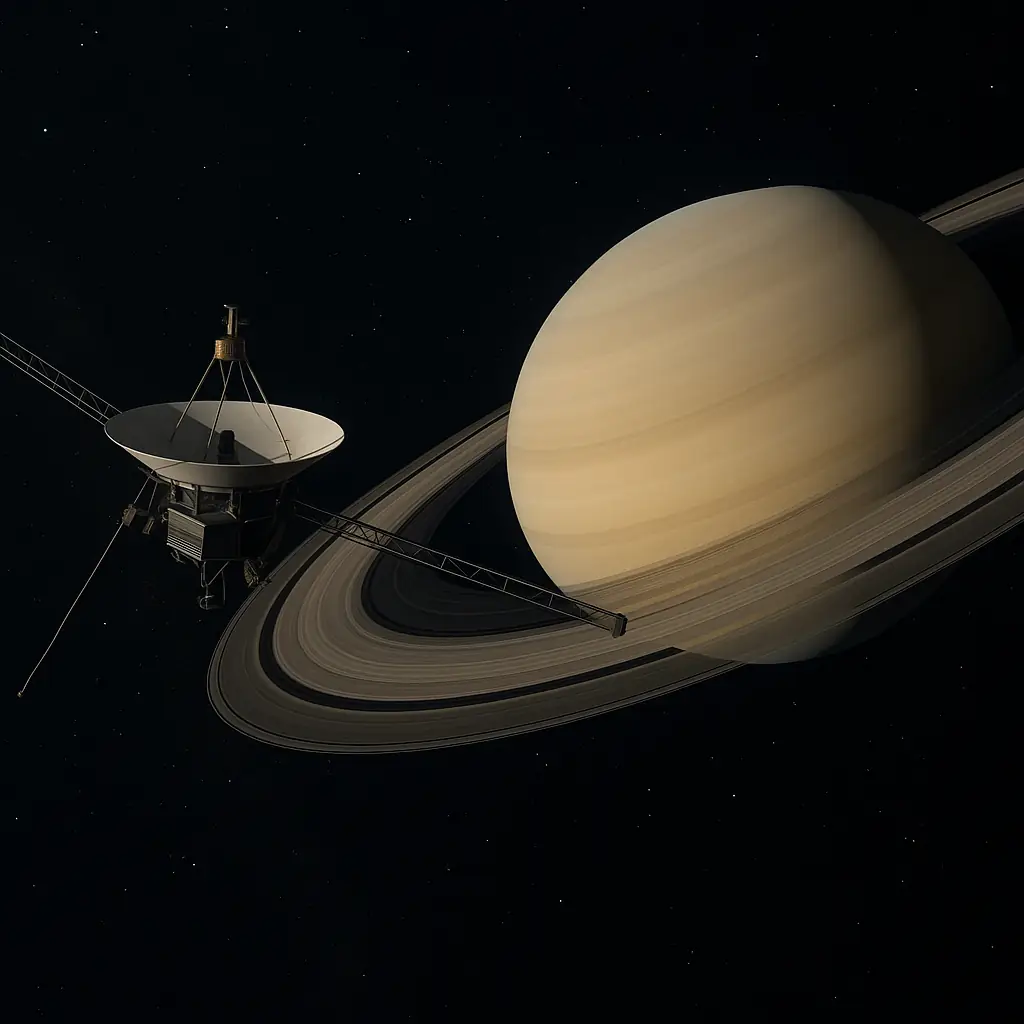
Saturn’s Physical Features Revealed
This gas giant, Saturn, boasts a composition primarily of hydrogen (96%) and helium (3%), with traces of methane and ammonia. Saturn’s massive size comes with a low density—only 0.69 g/cm³, less than water’s density, meaning Saturn would float in a large enough ocean. Saturn’s core, likely a mix of rock and ice, spans about 20,000 kilometers (12,400 miles) in diameter, surrounded by a metallic hydrogen layer. Above this lies a thick atmosphere of molecular hydrogen and helium, giving Saturn a layered structure. For example, winds on Saturn can reach speeds of 1,800 km/h (1,118 mph), faster than Earth’s hurricanes. Saturn’s yellowish color results from sunlight scattering off ammonia crystals in the upper atmosphere. Additionally, Saturn experiences extreme temperatures, dropping to -184°C (-300°F) at the cloud tops due to its distance from the Sun. It rotates quickly, completing a day in just 10.7 hours, which flattens Saturn’s shape at the poles. This rapid rotation also generates a strong magnetic field, 578 times more powerful than Earth’s. Therefore, Saturn’s physical traits reveal a dynamic and complex world.
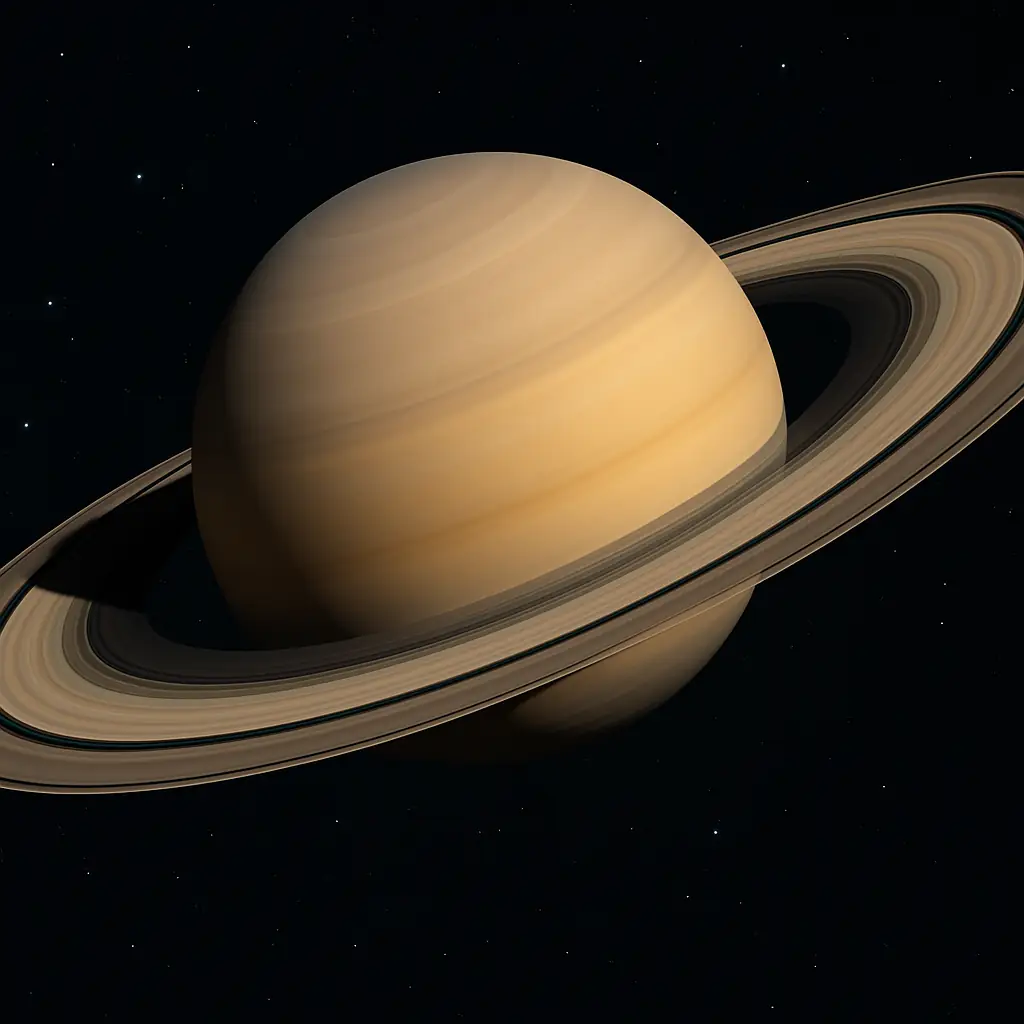
The Ringed Planet’s Iconic Rings and Moons
Saturn’s rings, a defining feature of this ringed planet, stretch across 282,000 kilometers (175,000 miles) but are remarkably thin, often less than 1 kilometer (0.6 miles) thick. Composed of ice particles, rocky debris, and dust, Saturn’s rings reflect sunlight, making them visible from Earth with a telescope. Scientists divide Saturn’s ring system into seven main rings, named A through G, with the A, B, and C rings being the most prominent. For instance, the Cassini Division, a 4,800-kilometer (3,000-mile) gap between the A and B rings, showcases their intricate structure. These rings likely formed from the breakup of a moon or comet, though their exact origin remains debated as of 2025. Additionally, Saturn hosts over 145 moons, with Titan, the largest, surpassing Mercury in size at 5,150 kilometers (3,200 miles) in diameter. Titan’s thick atmosphere, rich in nitrogen and methane, supports lakes of liquid methane on its surface. Another moon, Enceladus, spans 500 kilometers (310 miles) and features geysers that eject water vapor, hinting at a subsurface ocean. Therefore, Saturn’s rings and moons offer a wealth of scientific intrigue.
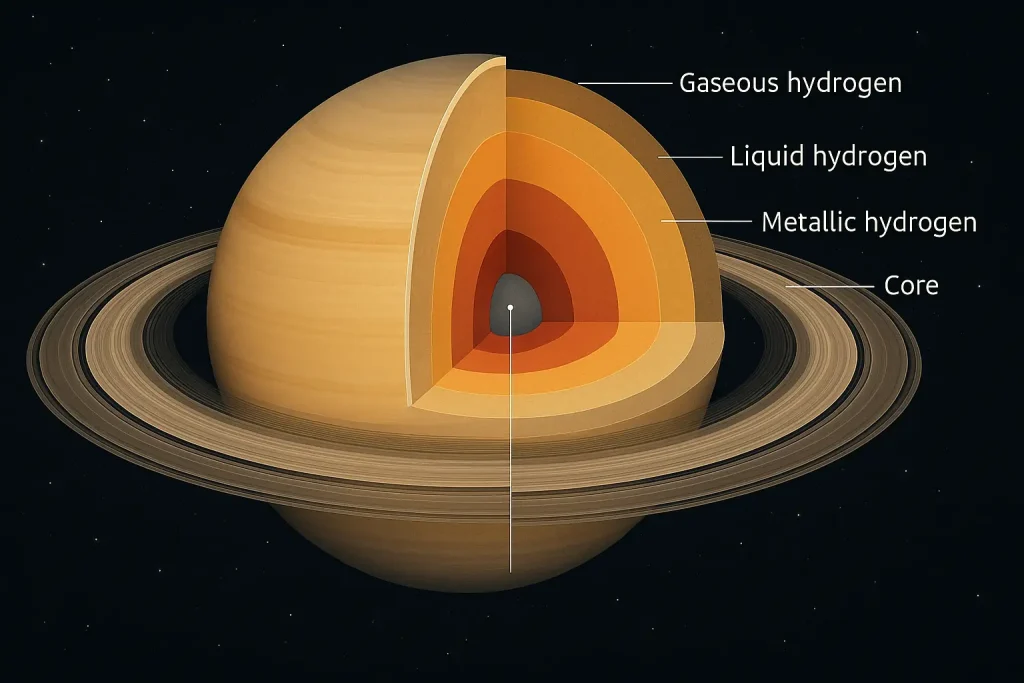
Exploring the Sixth Planet’s Discovery History
Humans have observed Saturn, the sixth planet, for centuries, but detailed study began with the invention of the telescope. In 1610, Galileo Galilei first spotted Saturn’s rings, though he mistook them for large moons due to his telescope’s limitations. Later, in 1655, Christiaan Huygens confirmed the rings’ existence and discovered Titan, Saturn’s largest moon. For example, by the 19th century, astronomers identified more moons, including Enceladus and Mimas. The space age brought closer examination of Saturn. In 1979, Pioneer 11 became the first spacecraft to fly by Saturn, capturing images of its atmosphere. Voyager 1 and 2 followed in 1980 and 1981, revealing details about Saturn’s rings and moons, such as Titan’s thick atmosphere. However, the Cassini-Huygens mission, launched in 1997 and arriving in 2004, revolutionized our understanding of Saturn. Cassini orbited Saturn for 13 years, sending back data until its intentional crash in 2017. The Huygens probe, part of the mission, landed on Titan in 2005, marking the first landing on a moon other than Earth’s. As of 2025, scientists propose new missions, including orbiters to study Enceladus’s potential for life. These milestones highlight humanity’s growing fascination with Saturn.
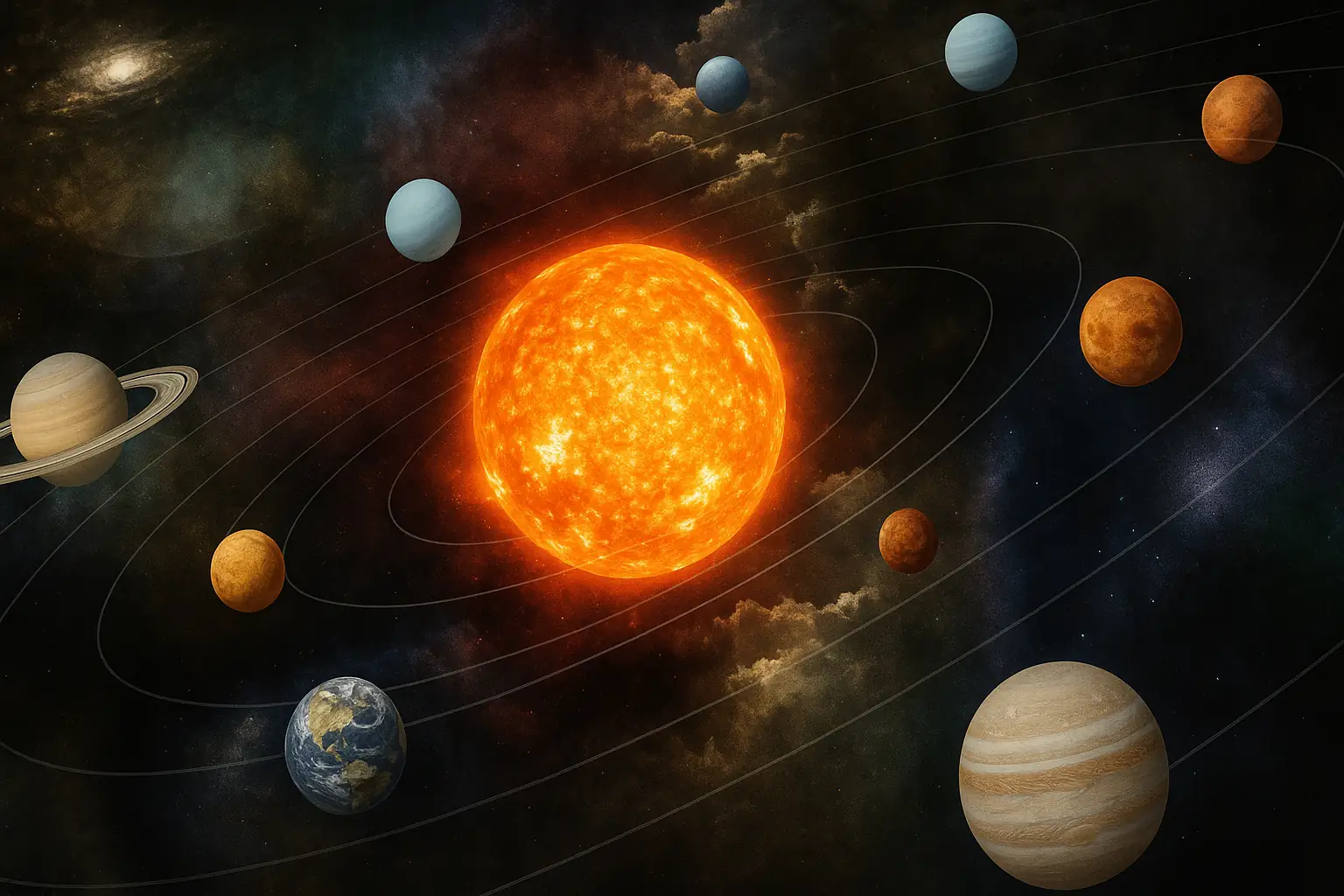
Why This Gas Giant Matters in Science
Saturn, a gas giant, plays a crucial role in advancing planetary science and our understanding of the solar system. For example, Saturn’s rings provide a natural laboratory for studying disk dynamics, similar to the processes that formed planets billions of years ago. A 2023 study in The Astrophysical Journal used Cassini data to model how Saturn’s ring particles interact, offering insights into planetary formation. Additionally, Saturn’s atmosphere, with its high-speed winds and massive storms, helps scientists understand weather patterns on gas giants. In 2024, researchers at NASA identified a hexagonal storm at Saturn’s north pole, a phenomenon spanning 30,000 kilometers (18,600 miles) and persisting for decades. Moreover, Saturn’s moons, particularly Titan and Enceladus, are key targets in the search for extraterrestrial life. Titan’s methane lakes and organic molecules suggest conditions that could support life, while Enceladus’s subsurface ocean, confirmed by a 2022 study in Nature, contains hydrothermal vents. These vents may provide the chemical energy needed for life, similar to Earth’s deep-sea ecosystems. However, challenges remain, such as Saturn’s distance and harsh environment. Therefore, Saturn’s study continues to push the boundaries of science and exploration.
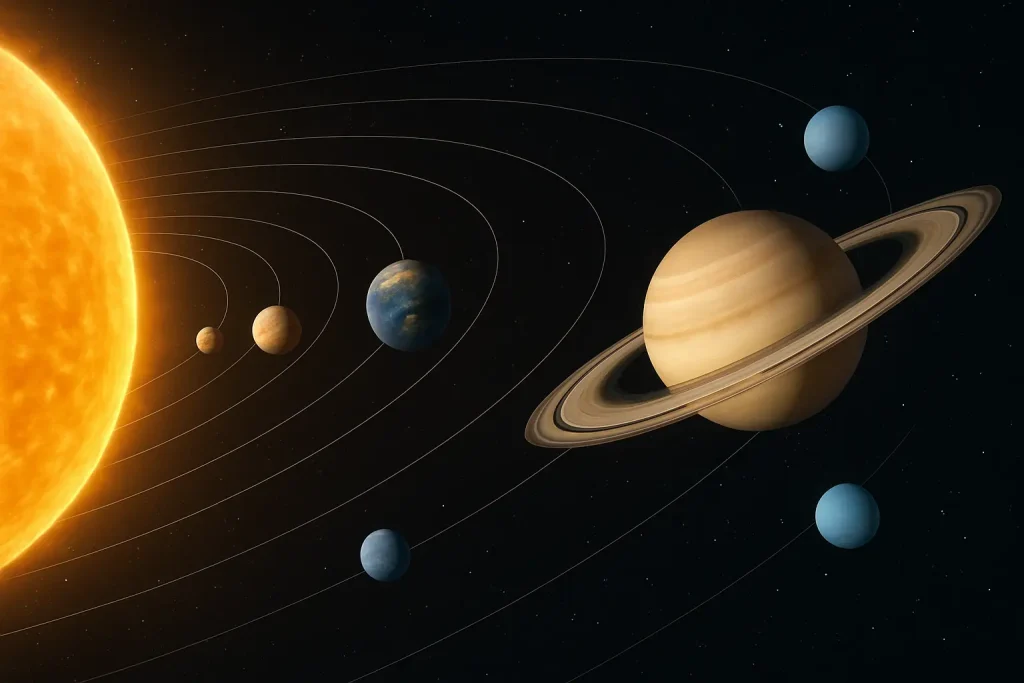
Leave a Reply